ESPAÑOL ABAJO

Case: Ixil Genocide, period of the government of General Fernando Romeo Lucas García, (July 1, 1978 to March 23, 1982)
In 2008, the ODHAG accepted the request of the Association for Justice and Reconciliation -AJR-(1),to direct the investigation and the legal action in a criminal complaint against the Military High Command of former General Romeo Lucas García, for grave human rights violations committed by the State security forces against the Maya Ixil(2) ethnic group between July 1st of 1978 and March 23rd of 1982.
Between 2008 and 2019, preliminary investigation work was carried out, identifying a series of serious acts committed by elements of the Guatemalan Army in at least 22 communities of the municipalityities of Santa María Nebaj, San Gaspar Chajul and San Juan Cotzal and approximately 265 witnesses (91 men and 174 women) were identified, belonging to the Ixil, Kiché and Kanjob’al peoples, who are direct survivors of the events.
The general data extracted in the research stage caused the registration of a minimum of 1296 victims (nominal and non-nominal) in the context of:
- 34 Massacres (Cause death to more than 3 people in one same event).
- Extrajudicial executions.
- 49 events of submitting the population to Forced Displacement, persecution, bombardment, hunger, thirst and illnesses through destruction of means of subsistence in the mountains, which brought the death of members of the group.
- 23 events of burning, destruction, robbing and sacking of houses, harvests, work tools and belongings.
44 events of:
- Forced Disappearance.
30 events of:
- Sexual Violence.
To strengthen the testimonial evidence, 148 forensic anthropology expert reports were collected, previously carried out by the exhumation teams of the ODHAG, the Guatemalan Forensic Anthropology Foundation (FAFG) and the Center of Forensic Analysis and Applied Sciences (CAFCA), which constitute the scientific evidence that proves the veracity of the testimonies, the existence of the victims, the violence used against them, the conditions surrounding their death, the type of weapons used and the way in which they were killed. The expert reports also demonstrate that the victims were not killed in combat actions, that many of them were immobilized before being killed, that the vast majority were children, young people, the elderly and pregnant women, and that there is evidence of the viciousness with which the remains were attacked, mutilated and burned. Ballistic expert reports were also prepared by the National Institute of Forensic Sciences (INACIF), on the remains of ballistic material for military use found in the exhumed graves.
Fourteen general expert opinions were prepared by an equal number of national and international experts in different branches of science, who contributed scientific, theoretical, practical, historical, legal, anthropological, sociological, psychological, mathematical and jurisprudential elements for the analysis of the facts, the crimes and offenses, the culture, the protected group, the historical context, the modus operandi of the perpetrators, the violence perpetrated, the physical, material and mental damage caused to the victims and survivors, international humanitarian law and the effects and consequences of the violence, among many other aspects.
Approximately 40 documents of the Guatemalan Army, newspaper records, declassified documents from the United States State Department, independent, national and international reports of investigations of human rights violations, as well as documents of individualization of possible perpetrators of the events were collected and obtained under court order, through which plans and orders issued by the General Staff of the Guatemalan Army (EMGE) to carry out counterinsurgency operations in the Ixil Region and which caused serious violations were identified during the time of our investigation; Appointments of General Officers, Superior and subordinate officers who commanded the military units that executed the operations orders; an EMGE Intelligence Analysis that qualifies the Ixil population as an internal enemy of the State, U.S. State Department reports that recorded the orders to raze villages and livelihoods of the population, a Civil Affairs Plan which reinforces the qualification of the Ixil people as an internal enemy and designs military strategies and tactics that, when applied, caused serious damage to the life, community, culture and future of the victims.
In addition, material evidence was collected from the clandestine graves, such as skeletons, remains of the victims’ clothes and personal belongings, such as identity cards, and ballistic material used by the perpetrators. Also photographs and audiovisual material taken by national and international journalists in the context and place where the events occurred.
The means of investigation that have been presented to initiate the oral and public trial phase are as follows:
All the evidence gathered, the systematization and processing of the information allowed to establish that the Military High Command ordered,- in accordance with the Counter-Subversive Doctrine in force at the time, the information and conclusions presented by the Second Section (intelligence) of the EMGE on the scenarios and supposed threats detected and the information and conclusions presented by the Third Section (operations) on the state of force, the firepower, the maneuver capacity and the courses of action to be taken by the military units and troops to eliminate such threats- the national strategic planning at the level of the EMGE (and its sections or directorates of Personnel (S-1), Intelligence (S-2), Operations (S-3) and Staff (S-4)), the Tactical-Operational Planning at the regional and local levels, and the implementation of military operations aimed at neutralizing or eliminating the internal enemy and threats, in accordance with the courses of action chosen at the strategic level (3).
Thus, in military phases duly established (4) as Prevention Phase, Intervention Phase and Consolidation Phase, the actions of the High Command of the Guatemalan Army [composed of the President of the Republic (5), the Minister of Defense (6) and the Chief of the EMGE(7)], of the military operations of the General Staff Officers as chiefs of the EMGE Sections at the strategic level, and the Brigade Commanders, military Zones with jurisdiction over the 3 municipalities of the Ixil Region and their Detachments, at their respective levels, launched military operations with different degrees of scope, complexity and force that evidenced staggered and logical levels (from the military point of view) of violence that resulted, first in selective death, multiple and serious violations of the Human Rights of the non-combatant civilian population, and later the massive, systematic and generalized death followed by persecution, with the intention of eliminating the Ixil Mayan ethnic group, identified as an internal enemy and geographically located in the municipalityities of Santa María Nebaj, San Juan Cotzal and San Gaspar Chajul.
From a factual point of view, the Prevention Phase in the Ixil Region was implemented between 1978 and December of 1981. It consisted of the implementation of operations for the control of the population and its resources, intelligence operations against local, indigenous and peasant leaders to identify the supposed Local Political Administrative Organization of the enemy and proceed to eliminate it, registering at least:
- 65 events cataloged as Attempts on life, among those 14 massacres of selective character against local leaders, spiritual guides and members of Catholic Action, as well as against select groups of people, and,
- 12 events of Sexual Violence.
All classified as Crimes Against the Duties of Humanity.
The intervention phase was implemented from the beginning of January until March 23, 1982 and consisted of concentrated efforts, abundant resources and numerous personnel to launch intense military operations of destruction and expulsion, operations to control the population and to organize it against the subversive movement, which caused at a minimum:
- Death of members of the group, in 20 widespread, indiscriminate and massive massacres against civilian population.
- Injuries that seriously affected the physical and mental integrity of members of the group, including 17 acts of Sexual Violence:
- Subjection of members of the group to conditions of existence that caused their total or partial destruction, among these, 23 villages razed, robbery, looting and destruction and 49 facts of persecution, bombing, subjection to hunger, thirst and disease.
All of which were classified as acts of genocide.
At the end of 2019 the Public Prosecutor’s Office with the support of ODHAG’s legal team, filed indictments and accusations against 4 high-ranking Military being these: Retired Generals Manuel Benedicto Lucas García (former Chief of General Staff of the Army), Manuel Antonio Callejas y Callejas (Chief of the Intelligence Section), retired Colonel Cesar Octavio Noguera Argueta (Chief of the Operations Section and deceased by COVID in prison in 2020) and retired General Luis René Mendoza Palomo (Minister of Defense) deceased while on the run.
The accusations presented fall within what is indicated in the crimes of:
- Crimes Against the Duties of Humanity, committed during the Prevention Phase in 77 acts, during 5 years and 6 months. (from July 1st of 1978 to December of 1981).
Registering a minimum numbers of:
308 mortal victims
12 victims of SV (Sexual Violence)
- Genocide. Committed during the Intervention Phase in 86 acts, in 2 months and 23 days. (January- March 23rd of 1982).
Registering a minimum numbers of:
864 mortal victims
18 victims of SV - Forced Disappearance, during the entire period between 1978 until March 23rd of 1982, for a minimum of:
94 victims in 44 registered acts, 22 of them in the municipality of San Juan Cotzal.
Of the total registered victims (1296), a minimum of 740 were recuperated through exhumations, 278 corresponding to victims from 0 to 12 years and 462 from 13 to 60 years.
Current situation of the case (8):
The Trial, in the Oral and Public Debate Phase, was assigned to the First Court of Criminal Sentencing, Narcoactivity and Crimes against the Environment , group “A” which was supposed to have carried out the trial in 2022, however, after a series of excusals of several judges and a recusal (9) brought by the plaintiff AJR, the court was not integrated until April 2023.
At the same time, during 2023 the defense of the accused Callejas y Callejas required medical studies and examinations to evaluate his mental capacity, which were performed by professionals from the National Institute of Forensic Sciences of Guatemala –INACIF-. In the month of October the ODHAG presented two Experts in Forensic Psychiatry and Neurology to perform medical studies and give an independent opinion about the reports of INACIF, studies that concurred in the MENTAL INABILITY of the defendant to face trial by common law.
As a consequence, on January 3, 2024, the Court resolved to separate the Trial into two: 1.) A common trial open to the public against the accused Manuel Benedicto Lucas García and 2.) a trial behind closed doors and without the presence of the accused in order to apply special measures to protect the health of Manuel Antonio Callejas y Callejas.
With this resolution, the trial against Manuel Benedicto Lucas García (former Chief of General Staff of the Army) began on April 5, 2024.
Sexual violence as a tactic of war
Survivor Testimonies
During the investigation phase, approximately 33 acts of Sexual Violence were documented against children, youth and adult women, 14 victims in the municipality of San Gaspar Chajul, 11 of San Juan Cotzal, and 8 of Santa María Nebaj.
After the process of searching, locating, and approaching the survivors, a group of 30 moved forwards.
Subsequently, ODHAG established an agreement with ECAP, which, through its team of psychologists, undertook to provide psychosocial support to the women, bring the group together and prepare them physically, mentally and emotionally to face the future procedures of statement-taking by the Public Prosecutor’s Office and their presentation at trial.
Thus began, with a holistic methodology that consisted of meetings, workshops, individual and collective meetings, and home visits, the phase of reconstructing testimonies and experiences related to sexual violence. This work also included separate work with survivors’ partners to manage emotions, feelings, and effects of the acts of violence in the family and community.
The reconstruction of the events established that the range of ages of the victims at the moment of violence was between 9 and 17 years of age. Some of the female minors were breastfeeding when the events occurred, which also implicates violence against their newborns. All the women suffered interrogations, aggressions, and threats before, during and after the violations and all reported physical and psychological consequences of the events that persisted, such as illnesses, pregnancies, and natural abortions, serious hemorrhages, and states of fear and helplessness up to today.
On the other hand, the separation of the process into two cases, one behind closed doors and under special measures of protection against the accused Manuel Antonio Callejas y Callejas and a regular trial against the accused Manuel Benedicto Lucas Garcia, involved dividing the original group of witnesses in two, 13 women who came forth against Lucas Garcia for events that occurred in two months of duration and 17 women for the events that occurred in the two years in which Callejas y Callejas occupied the Military Intelligence Headquarters.
Finally, the testimonies of the 13 female survivors of the events referring to Lucas Garcia were presented in the last week of April of this year.
For this, the Legal team of ODHAG, the plaintiff organization, and the Prosecutor’s Office of the MP coordinated, with the Ministry of the Interior, the security mechanisms necessary for transport and security of the women. With the Tribunal of Sentencing that carried out the trial, measures of protecting their identities to avoid revictimizing them were taken as well. Each one of the survivors rendered their declaration in Oral and Public Trial with simultaneous translation in their mother tongue, protected by screens and veils accompanied in every moment by experienced psychologists, from ECAP, ODHAG, and the Prosecutor’s Office of the Public Ministry.
This permitted that the women rendered their declaration freely and spontaneously, not without the pain that still persists in their bodies and hearts, but with a sense of security and knowledge that moved the members of the Court.
Thus the case of the witness presented as “number 1” relayed what happened on February 16, 1982 in the Batz Chulul Tzee farm, in the municipality of San Gaspar Chajul, state of Quiché, when the community was assaulted by an army of airborne forces of the Guatemalan Military murdering her father together with dozens of Ixil men, women, and children civilians.
“Helicopters passed, I thought it was fun, like seeing vultures flying the sky, but then…the bombs started to fall.”
The witness reported that she and another girl between 8 and 9 years of age survived the massacre. “We saw that the people were gathered, I thought that it was a meeting, and when I entered the house, the people were not in a meeting, the people were hung, or had wounds, they had cut their hands and necks… I wondered what had become of the girls, I started to look for and found my sister. I had to leave the corpse of a woman who was hung for all to see, she was named Teresa.” Before the tribunal composed of two men and a woman, she recounted that after this both girls were captured and violated by various soldiers to the extent of becoming unconscious for three days.
“…the soldiers started to take advantage of us, first catching my friend, the other girl; I could not describe my emotions, they started to violate my friend and knew that at any moment they would come for me, the soldiers violated me, it was very strong and left me unconscious, they thought they had killed me, I lost all sensation and sense of time, the only thing that I remember is the first one that violated me, then I went to others and they did the same… it was much more than one person.”
“…I started to look for the girls, there were 7 houses and I started to look for them and I found a girl Rosa, she was in a place that was set on fire, she was upside down and they had killed her, in regard to the other girl I found, I did not find her completely, she was in a basket, that seemed to be for the dogs, she didn’t have a head, the soldiers decapitated her… it was the presence of the devil himself.”
The witness highlighted the physical and psychological effects of sexual violence that still persist for her, as all the survivors declared in this occasion:
“It was horrible, each time that I remember I become sad, this I will never forget, until I die these memories will stay with me…”
Another witness reported that on January 12, 1982, the soldiers arrived to her town called Ilom, in the municipality of San Gaspar Chajul and brought 16 people from the community. She told the tribunal that that day, soldiers from the Guatemalan Military killed her mother-in-law as she was subjected to sexual violence by at least six soldiers.
“What I say to this tribunal is that we appreciate you very much, we do not wish for this war to happen again, we want justice, the witness said before the tribunal”
The witness identified with the number three, for her part, reported about the same acts in the town Ilom in 1982, but different from the former, she could tell in detail to the Court how she was interrogated before the violation.
“…On January 15 at 10 in the night, the soldiers came to my house and violated me, when they did this, they threw me to the ground, they tied my two hands and began to put their hands on my chest, they were telling me where is the gun? and where the guerillas are? They asked me why I wasn’t answering them, they insulted me, they were calling me a deaf woman, I was resting because I had just given birth…”
They tied my hands, others tied feet, and they began to violate me, I have a broken back because of all they did to me, I yelled, but they told me to stop yelling and they had a rag or handkerchief to put around my mouth, they had firearms close and told me that if I kept yelling, they would kill me.
When I reacted, I was all muddy, it was raining a lot and I had a lot of blood aggravated for all they did to me. I don’t know why they did this, what we did wrong, we were living in the town in peace…”
The witness also narrated the consequences of the violation for her and the pain that persists for the altered grief.
“I was infected with something when they violated me, and I was left with that by the soldiers.”
“…85 to 90 were people who were murdered at that moment. It was very painful to lose my spouse, my father, and my siblings. We could not bury them as is our custom, because the soldiers ordered us to bury them in one place, our custom is to first wash the body of the deceased, after we make food and perform ceremonies.”
“At first I could identify my spouse in a grave, in others they buried more than one person, however they wanted, people on top of others, the boots still looked as the people left them. I remember his clothes very well, what he was wearing that day, and because of that I could identify him, I was telling the truth, because I was accompanying people who were recovering bones, I was present and if you wanted to verify we can go to the place, I will bring you…”
“I cannot ask for anything more than that there will be justice, I only ask for that and that my children not experience that, nor my grandchildren, I suffered and I had to overcome, but I do not want them to experience that.”
Another witness recounted that between March 22 and 23 of 1982, when she lived in a place called Estrella Polar, also in the municipality of San Gaspar Chajul, Quiché, the soldiers arrived and started a military operation against the town.
“They detained me, they dragged me, and pushed me, I was carrying my son, they took me from my son, they threw him, they attacked me and stripped me, violated me, harmed me, I do not know how many there were, when they finished I was left without any clothes, I was afraid, I lay there, regained consciousness, and started to remember, I began to touch my body, the mother of my body, the important part, the intimate part of my body.”
With profound pain, but with great strength, dignity, and eloquence the witness narrated to the tribunal the consequences caused by having been a victim of sexual violence:
“It’s a shame what I have to say about the mother of my body, when we returned I began to feel pain in my belly, in my body, I felt that my heart hurt, it hurt where babies grow, the part where babies grow and come out of the mother of my body…”
The witness narrated to the Court how after these events and the massacre of the habitants of the village, the few survivors fled to the mountains where they were subjected to conditions of bombardment, persecution, hunger, thirst, and illnesses that brought about the death of other members of the Ixil people.
“They persecuted us, we did not have clothes, the children walked naked in the mountain. There was nothing, the children were only crying as they spent time in the mountain while we continued being persecuted, they cut our harvest, destroyed everything in the mountain, what they wanted was to kill us. To the children we told them to stay quiet, to not cry so that the soldiers would not find us, we did not start fires to cook because the military could see the smoke and throw bombs, sometimes at night we lit fires, the children were yelling about hunger and crying, and the only thing we could do was give them cold water.”
Yet another testimony about the events in Estrella Polar was narrated by a woman survivor who at the time of the events was only a girl:
“I was 11 years old. I lived with my parents. All my siblings were assassinated by soldiers together with my dad”.
“They put us in a church and ordered us to pray, they put all the men in a church and made them kneel, at the moment that they began to pray, they threw a bomb where they all were, my dad was alive, but after, one by one, they threw them in a hole and among them was my dad. They said don’t be sad because those who are dying are animals”
“Now we have finished with this, we wait for the lieutenant from Cobán to come to know what to do with the women,” they said. It was at that moment that the soldiers violated her while threatening to burn them alive”
“Until now, I wake up remembering all they did, there are many people who were victims and I wonder what will happen with the people who did this,” she asked the members of the Court”
Something similar happened in the village Xolcuay, municipality of San Gaspar Chajul, as one of the few survivors of the events reported.
“On January 10, 1982, we were papering the wall when the soldiers arrived, it was about noon, we were in the house when they arrived, they were wearing black face paint, dressed in the color brown and spoke Spanish. They entered the house and began to search for something, what we had in the house was beans. They tied up my father and mother-in-law, started to ask questions to my father-in-law, they asked about his work, what he was doing, then they released him. Various soldiers were in the house, they took my baby and threw him to the floor and various soldiers grabbed me and hurt me. I could not defend myself because there were various, I yelled, they wanted to kill me, but I defended myself, I spoke to God and God helped me.
“This is why I have come today, this is why I am crying, I am sad, this is why I come for my rights, with the pain in my heart, I can’t stand the sadness anymore, for my dad, for all my family who died. I came with all my heart to give my declaration for the pain that I have in my heart…”
The village of Xix did not escape the state violence. A witness reported that she was only 9 years old when a group of soldiers arrived to massacre the inhabitants of her village, when she was sexually abused by a group of soldiers.
“When the soldiers arrived they entered the house and caused harm to my life. They harmed me, I almost died, I was very bloody, very bloody they left me.
My dad had been going to work, my brothers had been going to the harvest, I was alone with my mom, we could not leave, I died (-lose consciousness-), my mom told me that 4 soldiers entered the house and hurt me.
They grabbed me, they threw me to the floor near my bed, they went on top of me and treated me like I was an animal, like I was a dog. I died (-lose consciousness-), I did not realize what happened to my mom.”
“After they hurt me, the soldiers left me with an illness, I do not know what illness, my mom rubbed me (she said as she clutched the stomach)”.
One of the final witnesses recounted that the violation suffered was given in the mark of subjecting the families to forced displacement after a massacre,
“We do not know why they took us, but they took us with a lot of people, from other places, they took us to a house in Tzalbal, there were many women, many children, they were taking us one by one, they undressed us, they took off the huipil, they took off the corte (skirt), it is a tragedy what happened to us. In that house they harmed our bodies, mine and other women’s, they asked if we had seen the guerrilla and we did not have knowledge of that.
A strong airforce arrived, they began to drop bombs, my son was crying, so I covered his mouth and he died.
This was all in the period of Lucas (Gral. Romeo Lucas Garcia) who was the President…”
The last to testify said that she survived the events committed in the village of Río Azul, municipality of Santa María Nebaj, when “the soldiers arrived, they shot a man and after that they came up to my house and dragged me, I was carrying my baby on my back and they told me ‘leave that shit there’ and then others arrived and dragged me, my mother was there, because of all that, my mother died, we are afraid, I could no longer buy medicine to treat her”.
Impotence is part of the story and of the effects of violence that the survivors still experience:
“I lost consciousness when they hurt me. They violated me, dragged me and hit me. They did this to me in front of my mom, she couldn’t do anything because she was afraid.
They took my baby, threw him to the floor, my baby’s mouth was open, after I got up I went to my baby and I ran away. The other people in the village Rio Azul were piled up in their houses and burnt, there were quite a few people.”
In total, 13 women testified before the tribunal, the majority for massive acts of sexual violence, all committed by elements of the Guatemalan Military, whose operational chief at the time was the defendant, general (r) Manuel Benedicto Lucas Garcia.
The testimonies evidence the systemic practice of Sexual Violence against girls and women between 8 and 17 years of age, accompanied by executions, forced disappearances, massacres, interrogations, torture, forced displacement, bombs, and destruction of the means of life of the community.
The modus operandi and the patterns found in the events do not leave any doubt to the intent to destroy the fabric of society and community, using for that the bodies of women and girls, who according to their cosmovision, have a fundamental role in their culture and community unity.
- The AJR brings together hundreds of victims and survivors of the Internal Armed Conflict from the Achí, Kanjob’al, Kakchiquel, Quiché and Ixil Mayan regions.
- Located in the municipalities of: Santa María Nebaj, San Juan Cotzal and San Gaspar Chajul, Department of Quiché.
- According to the Manual del Oficial de Estado Mayor, First and Second Parts, in force at the time. Elaborated by the Centro de Estudios Militares, CEM, of the Guatemalan Army. General Directives of the EMGE issued between 1978 and 1982.
- According to the Counter-Subversive Warfare Manual, in force at the time, prepared by the Guatemalan Army’s Center for Military Studies (CEM).
- As Commanding General of the Army.
- As General Commander of the Army.
- As Administrative Commander and second in command of the Army.
- Ministerial file MP001-2009-81416, and Criminal Case C-01076-2013-00005 in the Judicial Organism.
- This recusal was filed against Judge Sandra Julieta Lobos Luna. Our investigation team established that Judge Lobos Luna could jeopardize the objectivity of the process given her relationship as a granddaughter with retired General Rodolfo Lobos Zamora (deceased), allegedly responsible for the facts investigated when he had under his command the Military Zone of Quiché, between 1979 and 1980; as well as for the membership of her father and uncle in the Guatemalan Army, being her uncle, from the same promotion of officers from which graduated characters such as Moisés Galindo (Foundation against Terrorism), Col. Mauricio López Bonilla (former Minister of the Interior of Otto Pérez Molina) and Jorge Vinicio Sosa Orantes (sentenced for the Massacre of the Dos Erres Village).

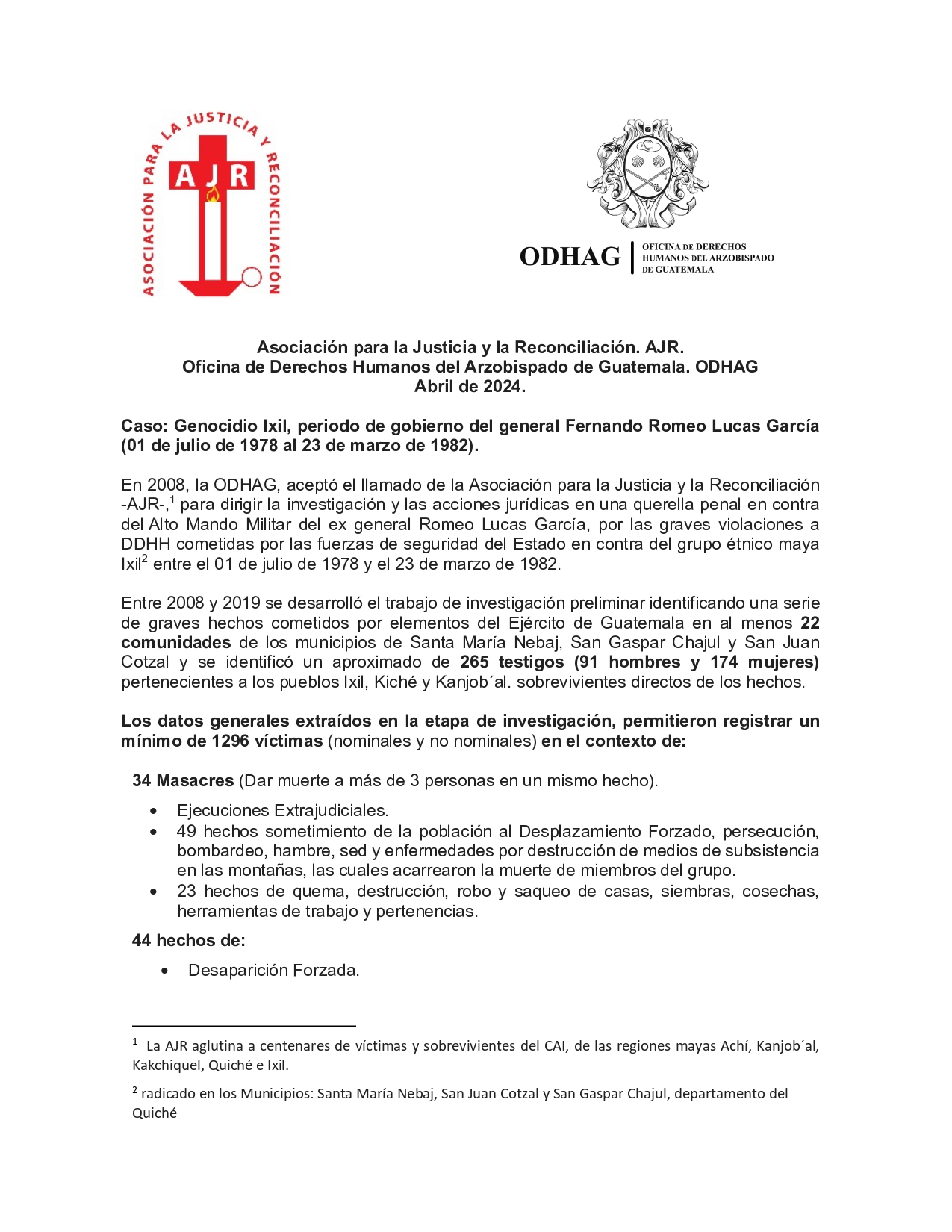
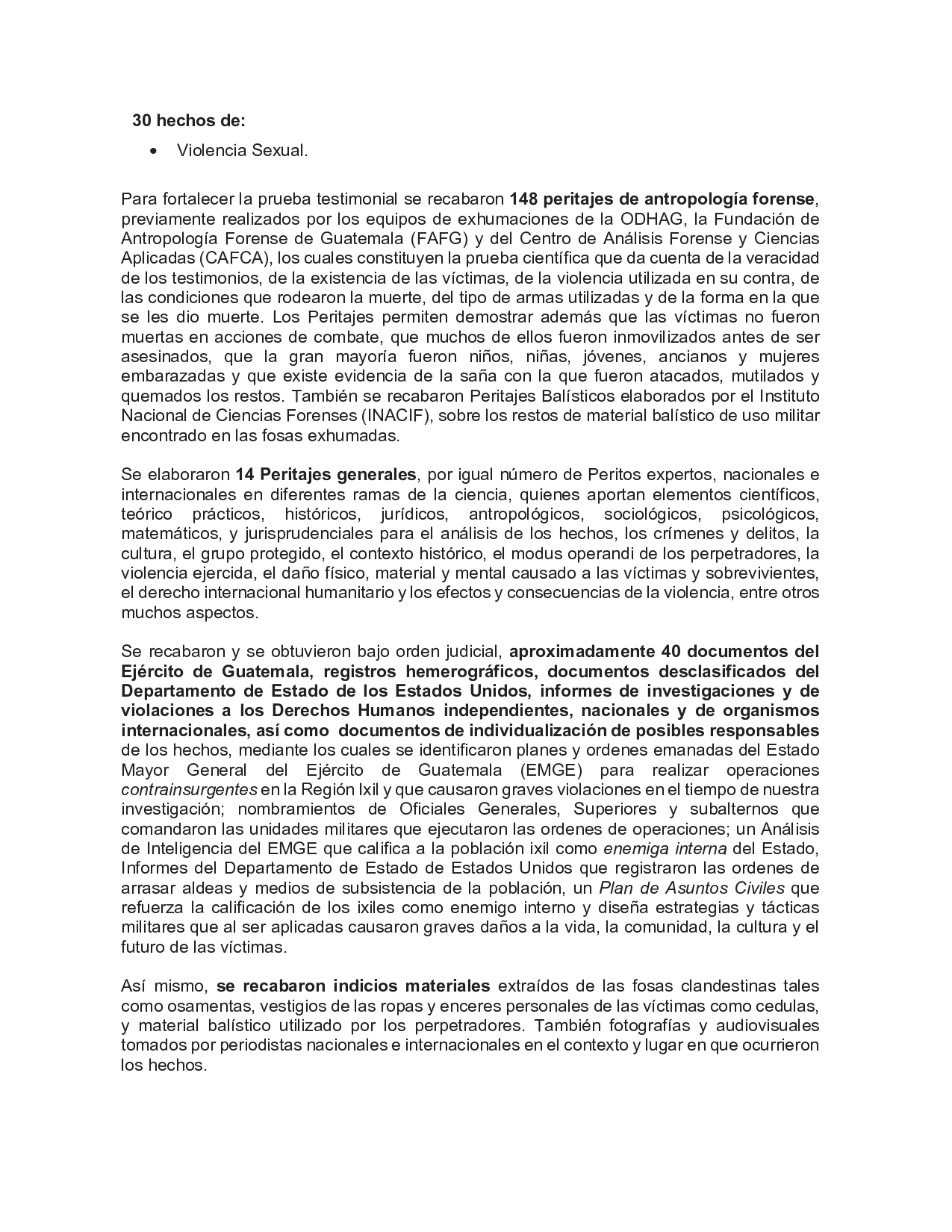
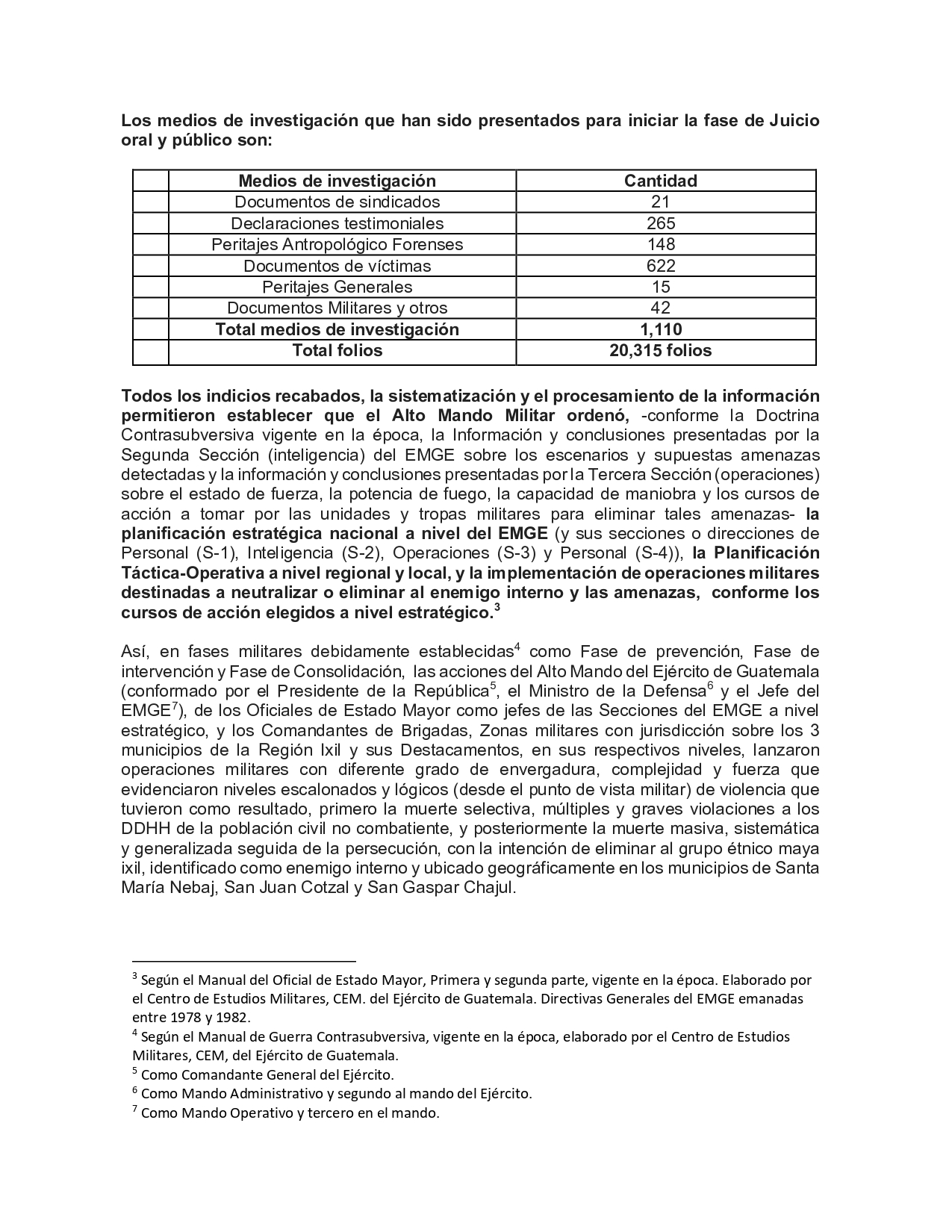
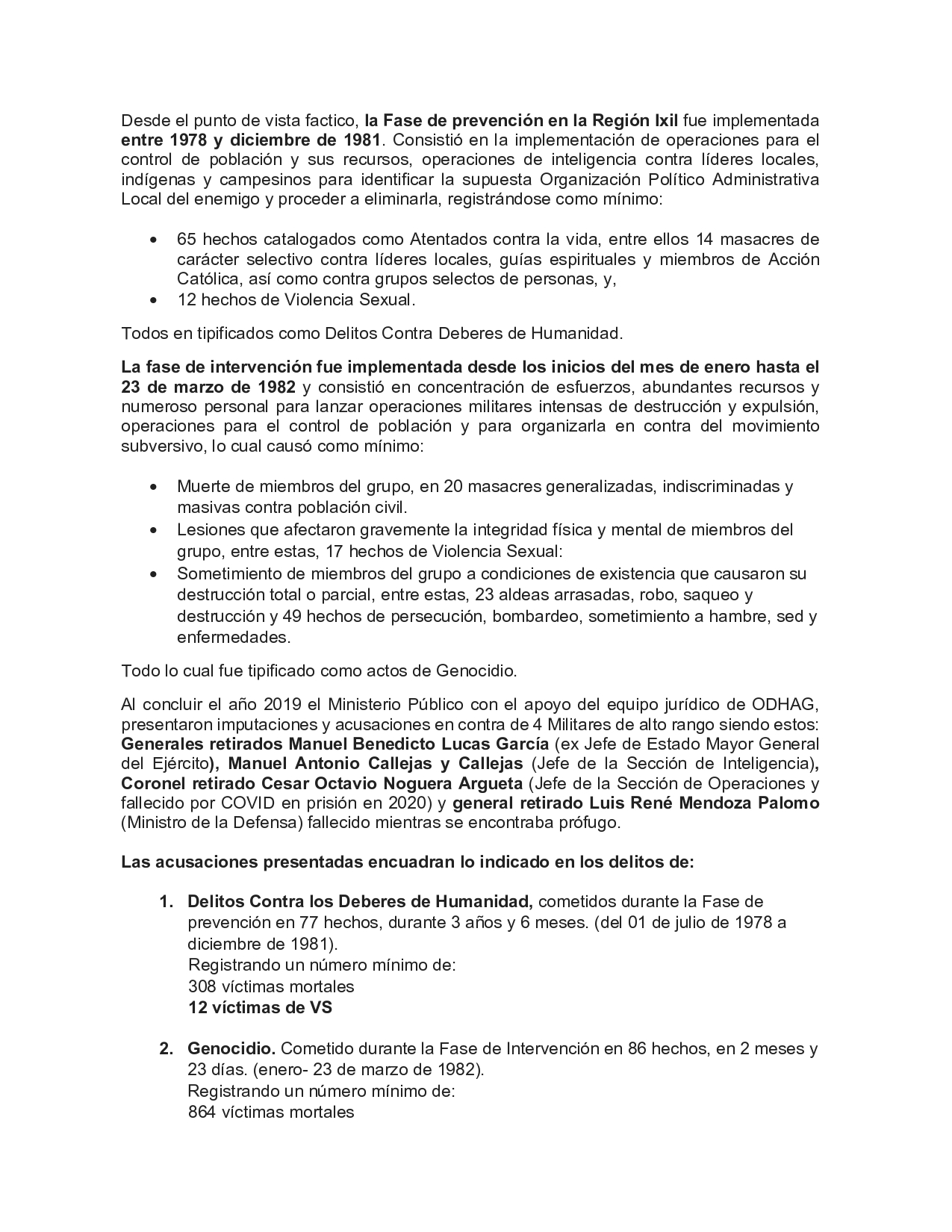

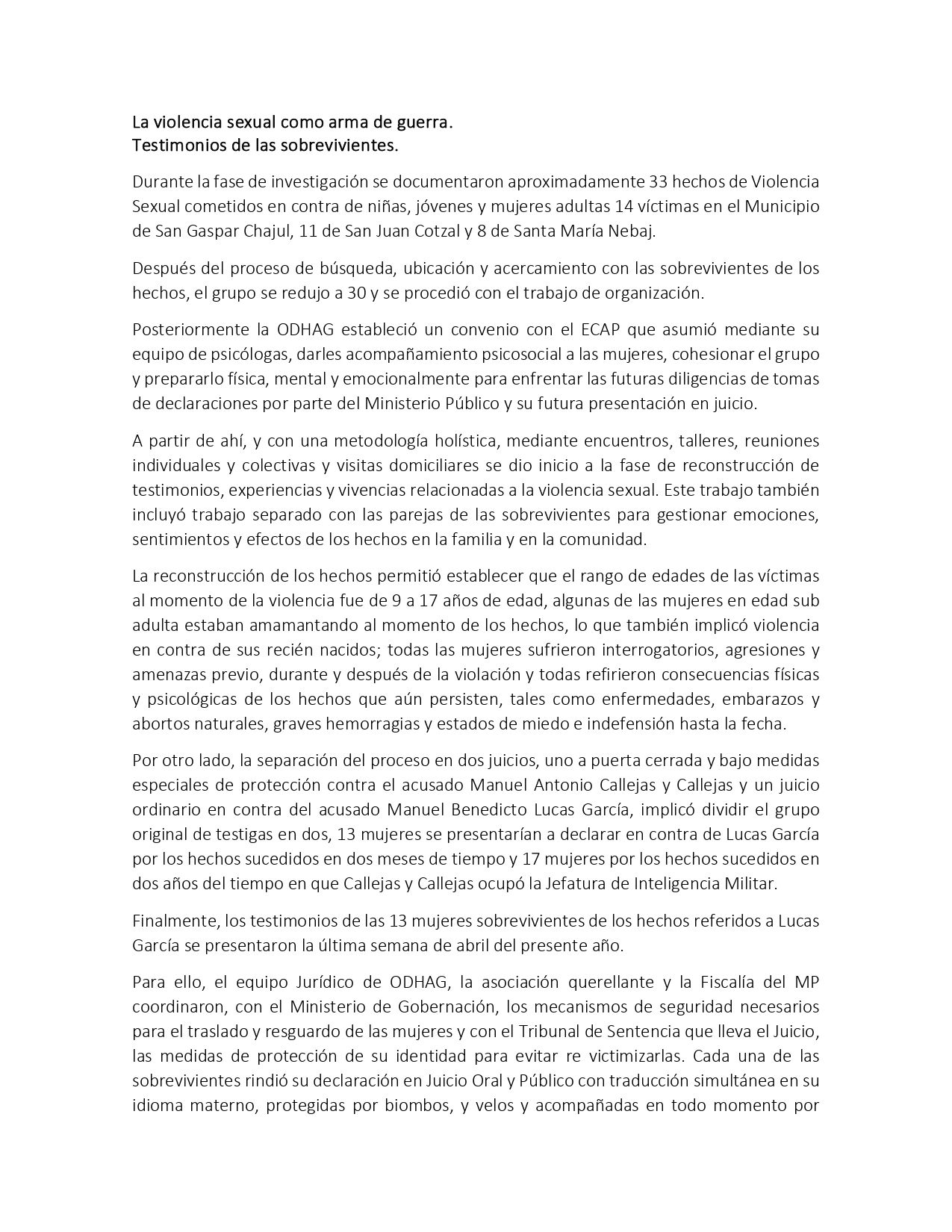
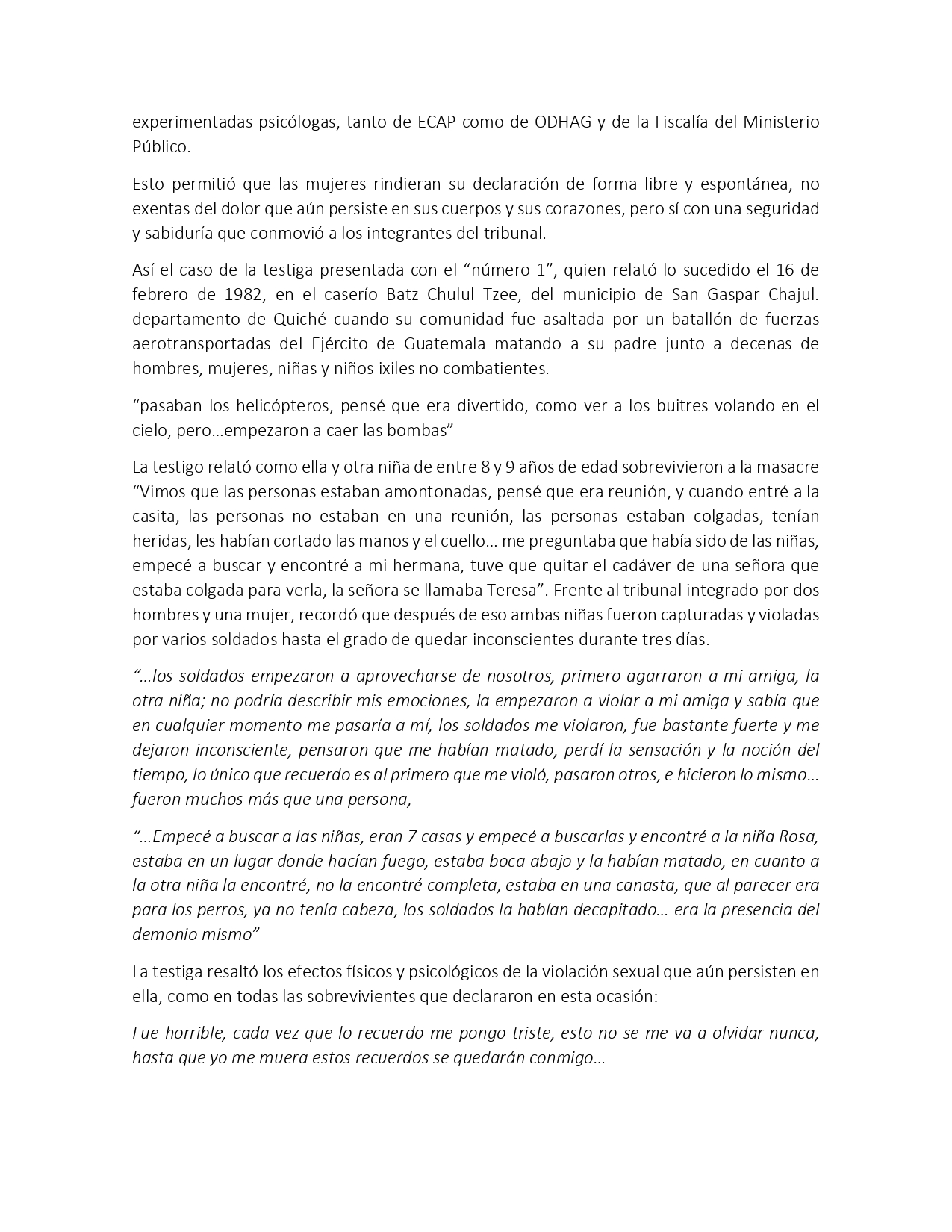

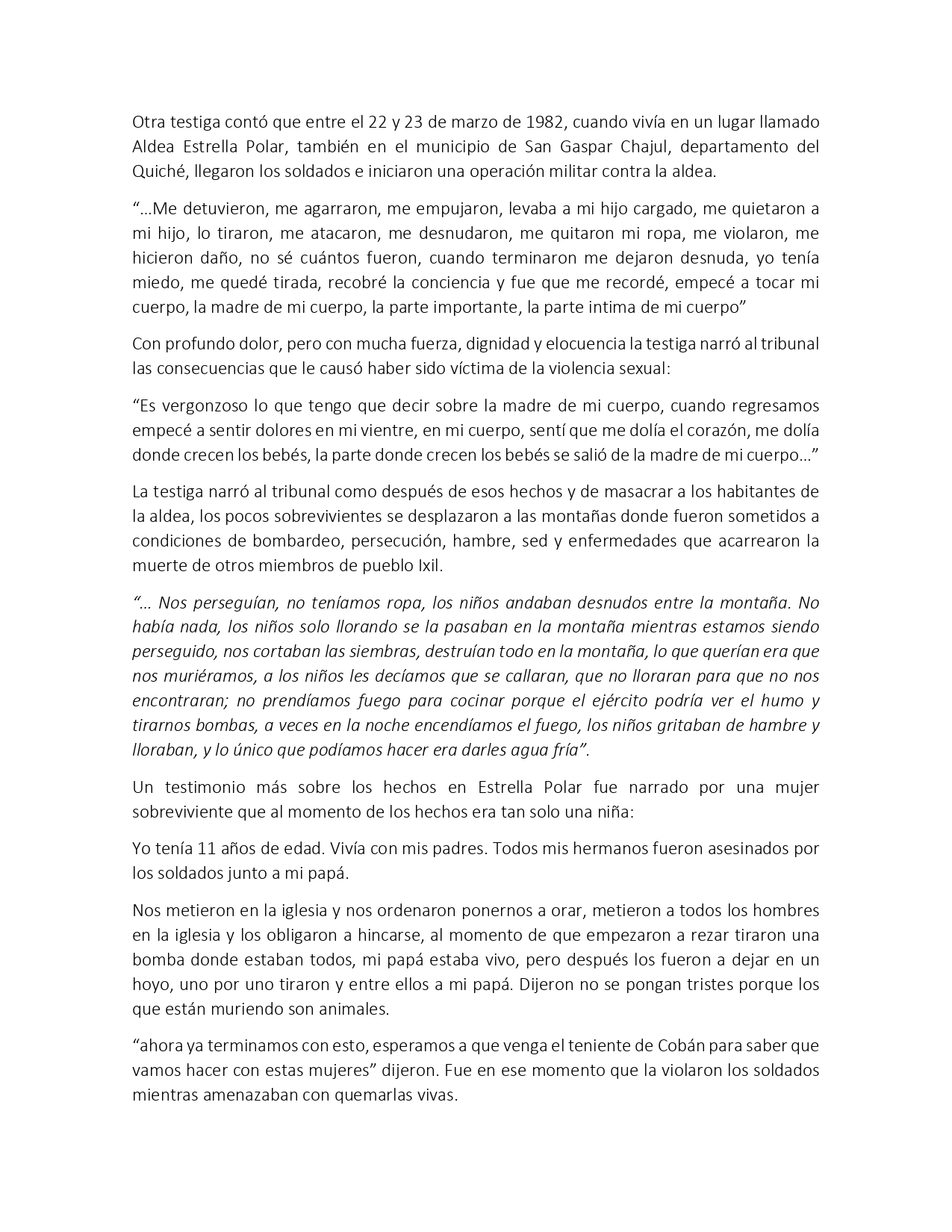
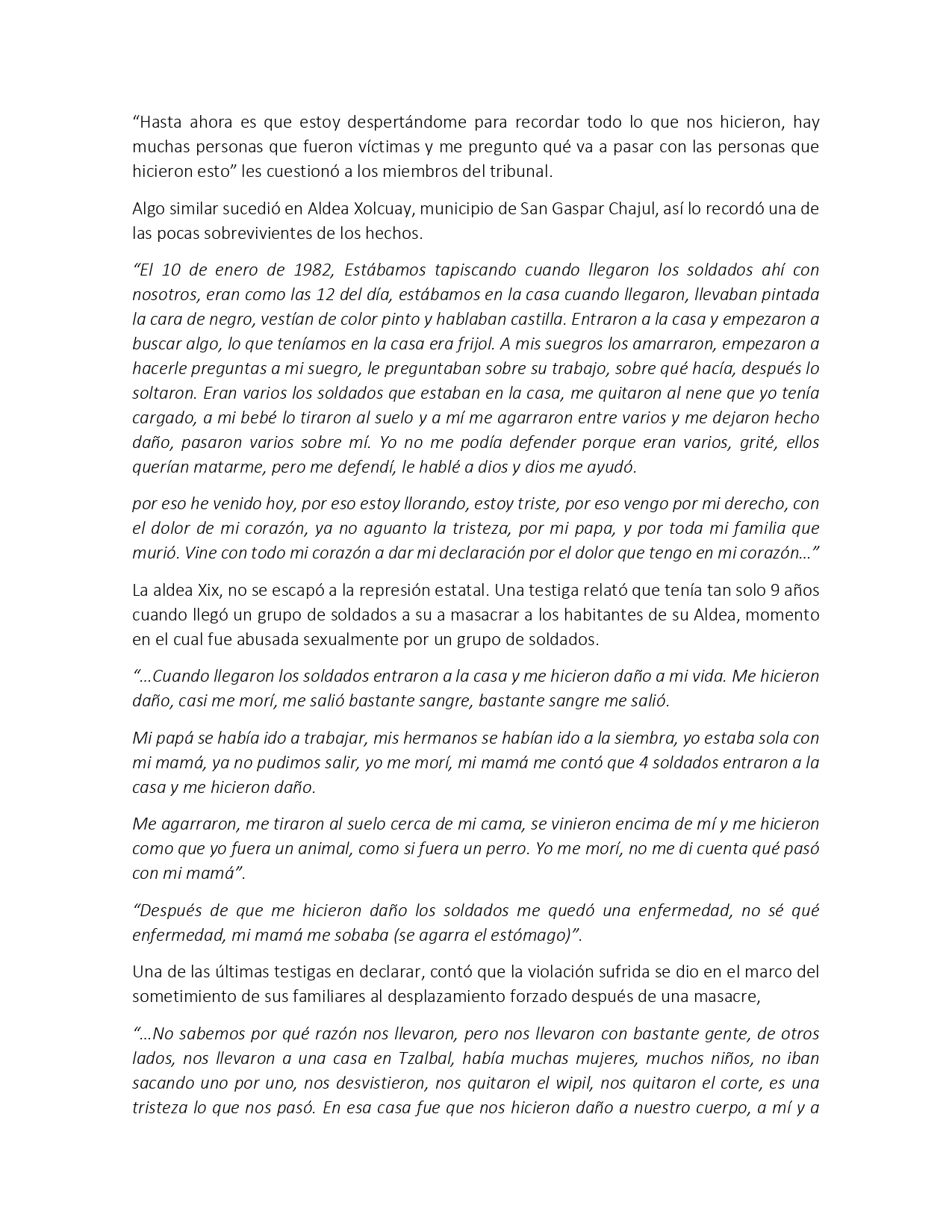
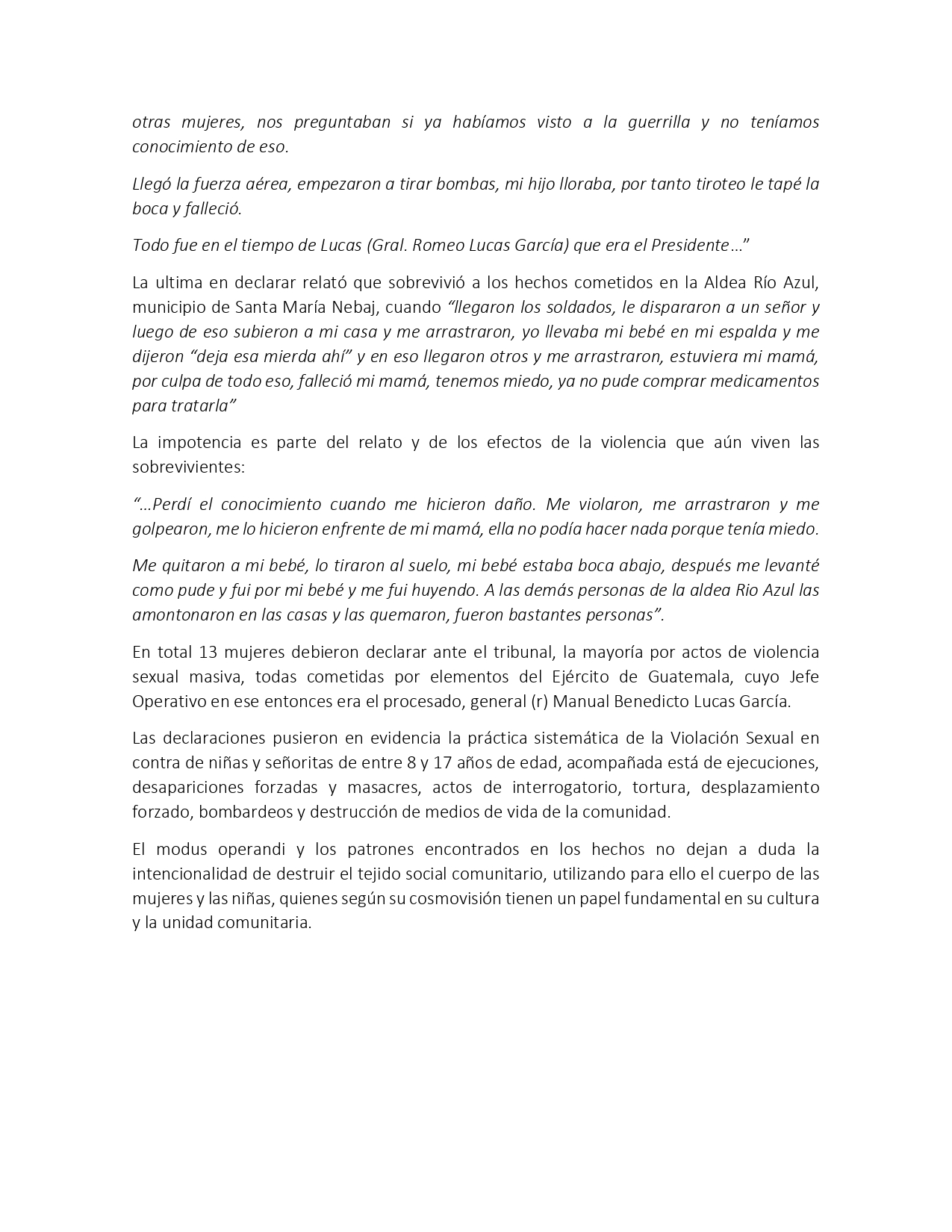
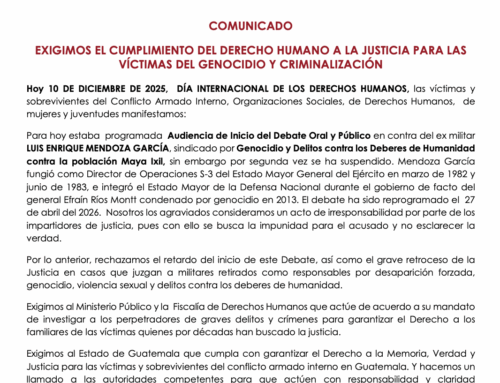
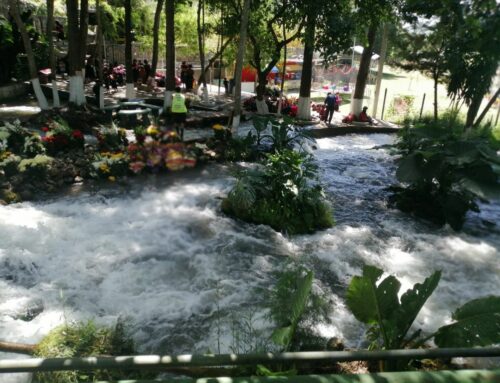

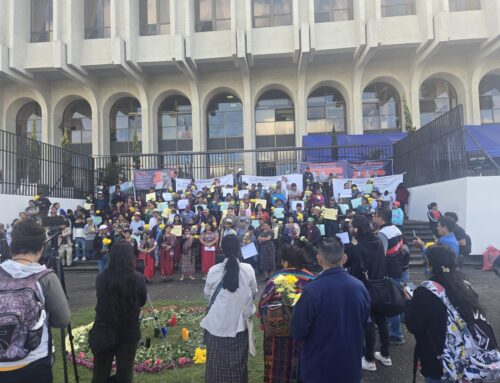
Leave A Comment